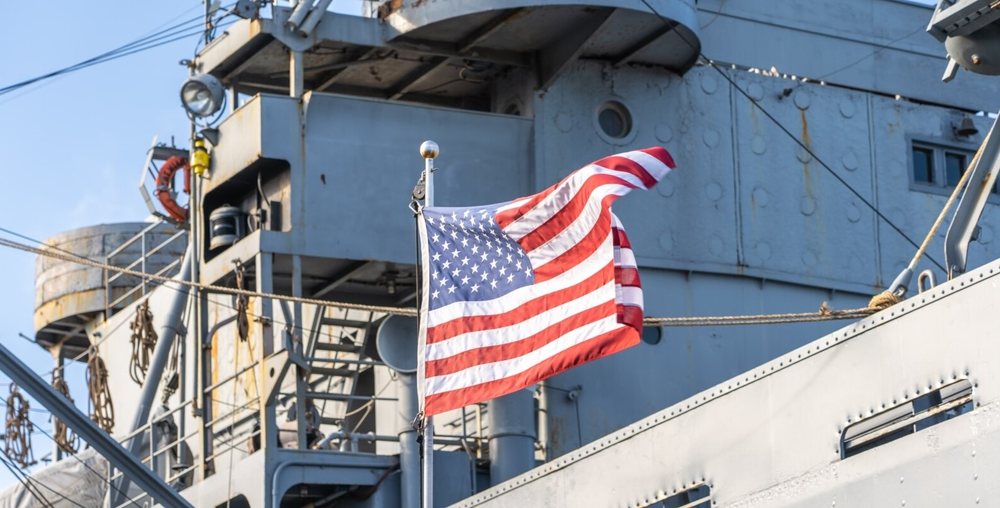
The United States says China is the biggest threat to national security and the biggest challenge to the US military in its efforts to defend its status as the world's largest and deadliest military force. But as the Chinese navy continues to grow, the number of ships in the US fleet is dwindling.
The US Navy has 296 ships. Thousands of companies manufacture and maintain their parts. Among them is Fairbanks Morse Defense, the largest engine manufacturer in North and South America.
The president of this company, George Whittier, told Voice of America that 90% of the company's business is related to the US Navy or Coast Guard.
The company, he said, expected the size of the navy's fleet to grow to meet the objectives of the Navy's structure, which increases every year.
But in recent years, the US Navy's fleet has shrunk. Last year's budget funded the construction of only six new Navy ships, while it decommissioned 15 older ships from its fleet.
"The 2025 budget plans originally called for the construction of 10 new ships, but now it will require the construction of only six new ships and the decommissioning of 19 old ships. So this means 13 fewer ships for the US fleet," says George Whittier of Fairbanks Morse Defense.
The United States Navy is still considered the most powerful in the world, but the number of American naval ships is declining compared to those of China. According to the Pentagon, this year the Chinese military is expected to have over 400 warships.
"It's very frustrating and very challenging to be a supplier. They're rapidly increasing the size of their navy and we're being left behind at a time when we need to build more ships," says George Whittier of Fairbanks Morse Defense.
Admiral Jim Kilby, acting chief of Naval Operations, agrees with this assessment.
"For a long time, we have been asking for a bigger navy."
But he says there has been no budget to replace all the aging ships and submarines, much less to increase their number.
"When we get funding to build a new ship, we usually replace an old ship, because maintaining old ships is more expensive and more difficult," he says.
Mr. Whittier says the lack of growth is not only slowing down the naval defense industry, but is also hurting the supply chain.
"Thousands of suppliers have been forced to close their businesses and this is a real risk. I received a notification from people at Electric Boat, a submarine manufacturer, saying that they had identified about 350 critical suppliers who would be difficult to replace if they closed," he said.
Fairbanks Morse Defense is one of the largest suppliers of American submarines and the only company that provides the largest engines used for the military's amphibious warships.
Each engine is the size of a small bus.
"We need to have two engine suppliers. But considering the navy only builds six ships a year, it's difficult to even keep one engine supplier," he says.
This problem has prompted the US President to take action, announcing this month the opening of a new office in the White House dedicated entirely to shipbuilding.
"We've built so many ships. We're not producing many right now, but we're going to do that very soon," President Trump said.
Congress is expected to increase the military's budget to eliminate its shipbuilding shortcomings.
While the majority of ships manufactured in the United States are for its military, Senator Mark Kelly told VOA that the state of the American commercial shipbuilding industry is even more dire.
"From the 10,000 ships we had during World War II, we have dropped to 85 today. So, in an emergency, in the event of a conflict with a nearby enemy, we are quite limited in taking all the measures to send supplies, equipment and troops across the ocean," he said.
The United States builds about five merchant ships a year. China builds more than 1,000.
"They have a shipyard, just one shipyard, that's bigger than all of our shipyards combined. They can build them very, very quickly, and we just don't do that anymore."
Senator Kelly in December introduced a bipartisan bill called the Ships for America Act. The bill aims to increase the United States' commercial shipping fleet by 250 ships over 10 years, which would also increase the supply chain for military vessels.
"Many of the parts that are used to build an American aircraft carrier, some are also used to build cargo ships."
Defense industry leaders say they welcome efforts to prioritize shipbuilding to compete with China and warn that inaction would put the United States further behind in the future.
The navy's latest shipbuilding plan increases its fleet to 380 ships by 2040, still far fewer than the number of ships in the Chinese navy today. VOA (A2 Televizion)











